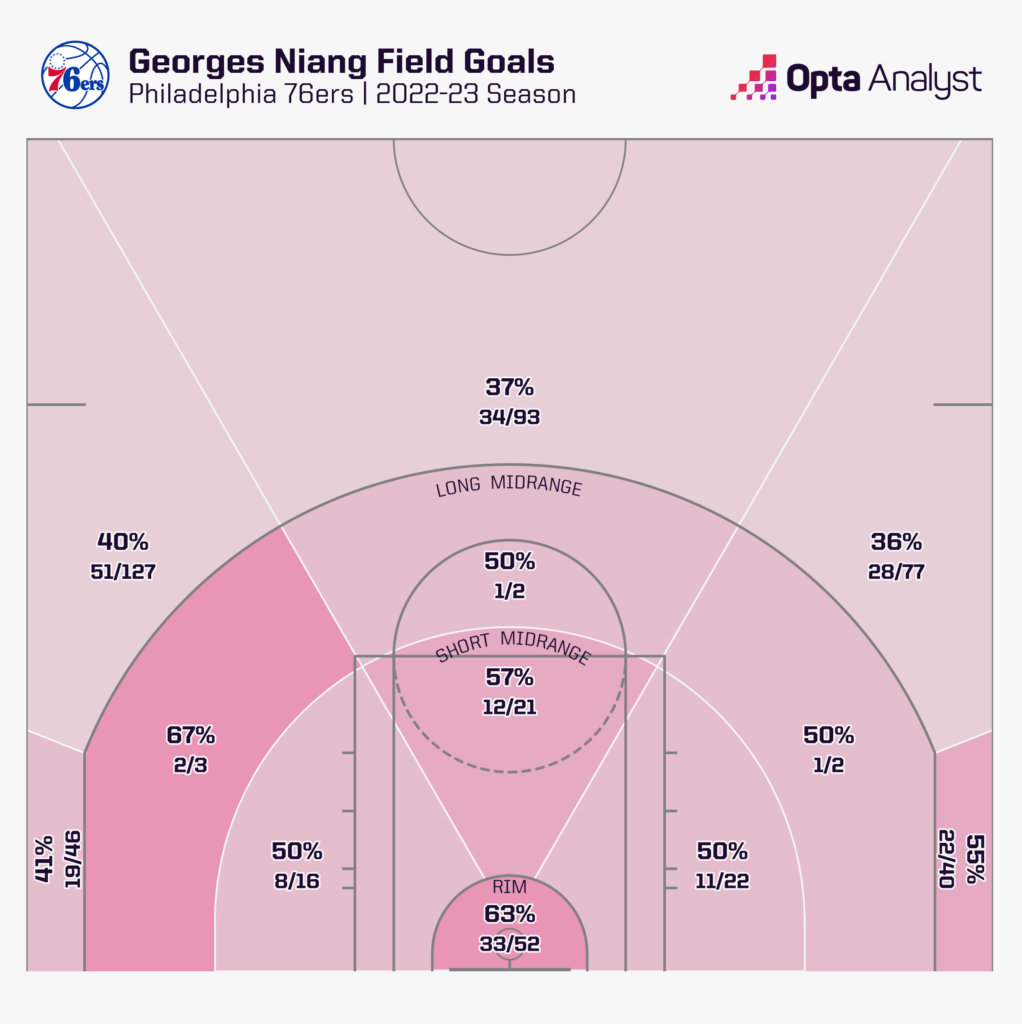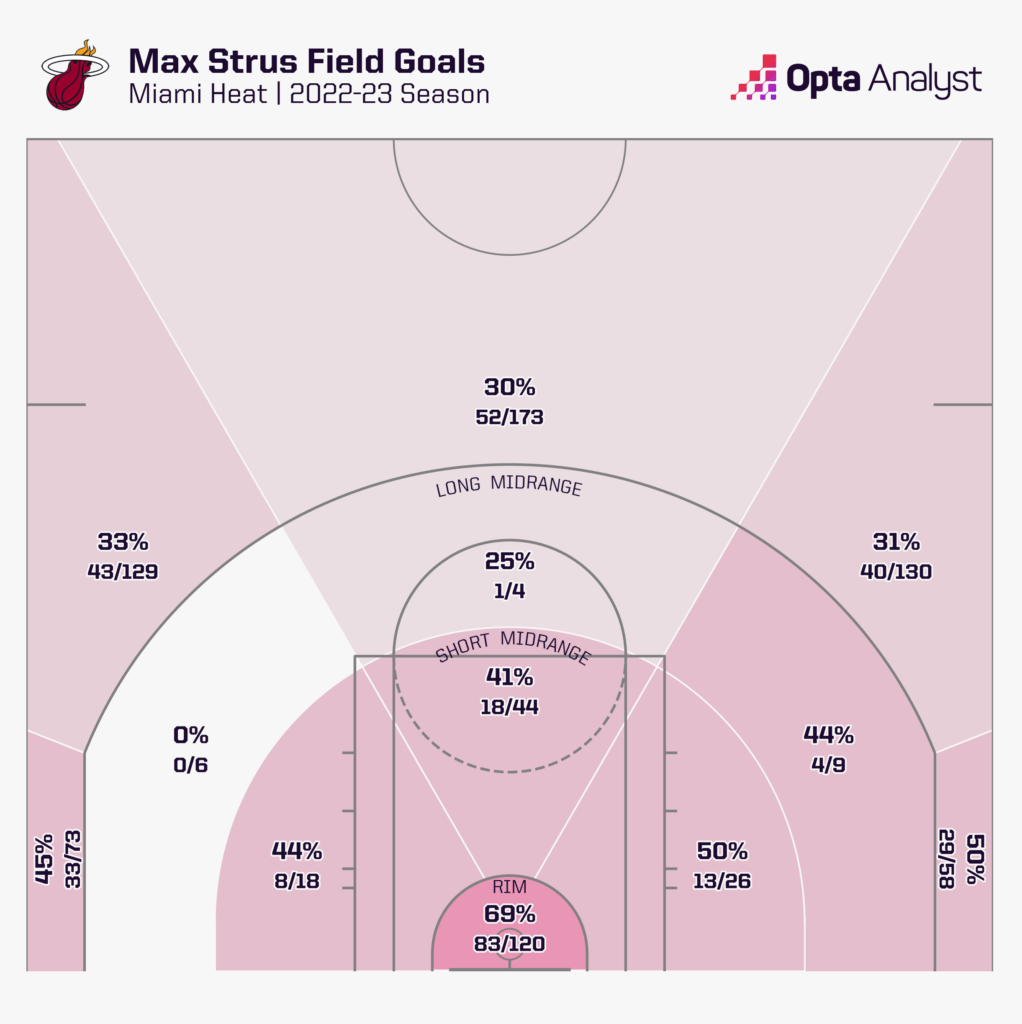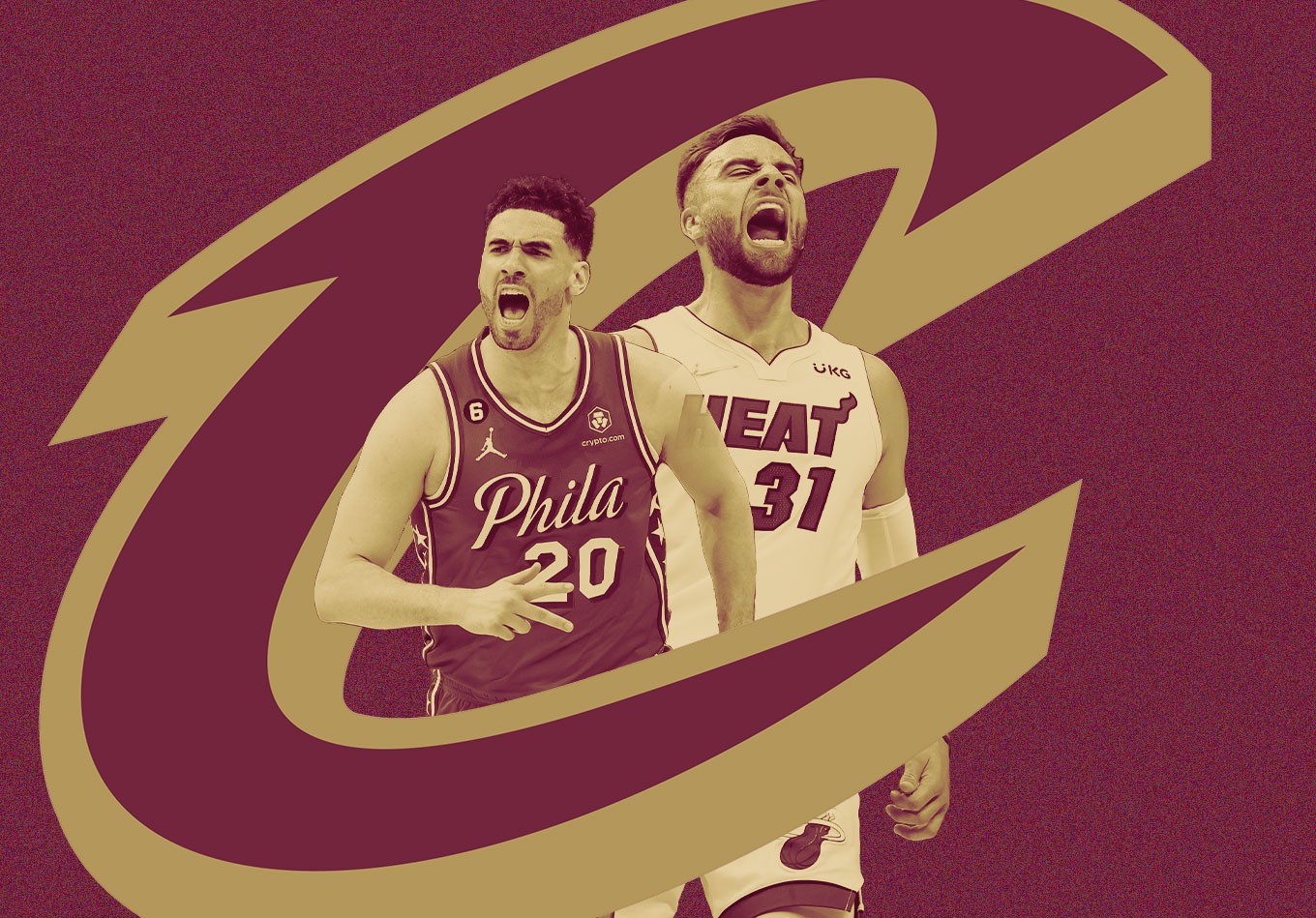When free agency commenced late last month, the Cleveland Cavaliers clearly sought a specific commodity: floor spacing – particularly in the frontcourt.
They quickly inked veteran swingman Georges Niang to a three-year, $26 million deal, executed a sign-and-trade for Miami Heat forward Max Strus, and pried away Golden State Warriors guard Ty Jerome from the Bay Area.
While the Cavaliers enjoyed a fantastic regular season that propelled them to 51 wins and their first playoff appearance since 2017-18, they faltered in the first round against the New York Knicks, losing in five games and looking ill-suited for the sort of deep playoff runs they envisioned after acquiring Donovan Mitchell last summer.
Despite finishing eighth in offensive rating (113.7) during the regular season, they crumbled in the playoffs, posting the 14th-worst offensive rating (101.1) of the 16 teams in the playoff bracket. The defense, while not as overwhelming as the first 82 games, remained stingy, but Cleveland simply could not decipher a game plan to provide stability on each offensive possession. Everything looked like a grind. Consecutive buckets felt like winning the lottery. Jumpers launched were defined by desperate hope, not self-assurance.
With two non-shooting big men anchoring the defense in Evan Mobley and Jarrett Allen (ninth and 13th in the NBA, respectively, in defensive DRIP), the floor-spacing would have to come elsewhere. For most of the season, it came from star guards, Mitchell and Darius Garland. Yet given that both of them tend to shepherd ball screens or station themselves as above-the-break marksmen, the lack of wing and frontcourt shooters emerged as a daunting problem once the playoffs began. Mobley and Allen didn’t have a steady release valve in the corners, where the first look tends to be on short-roll scenarios. Now, the corner will be a useful option for them.
Part of Kevin Love’s importance in 2021-22 was his distinct presence as a credible shooter and frontcourt scorer. With his outside shooting regressing this past year and eventual departure from the franchise, Cleveland lacked the necessary shooting around its core four, though that group’s own struggles were also central to the first-round flameout.
Its frontcourt rotation players – Mobley, Allen, Isaac Okoro, Lamar Stevens and Cedi Osman – hoisted 21.7 3-pointers per 100 possessions during the regular season. Niang and Strus alone combined for 25 per 100 possessions last year. Because of limited volume and effectiveness, New York was entirely comfortable ignoring complementary players to clog the paint, swarm Mitchell and Garland’s drives, and blanket Mobley and Allen’s rolls. Niang and Strus should change that. At the very least, they’ll challenge that defensive gambit.
Niang is a career 40.3% shooter beyond the arc (37.6% in the playoffs) with a career .698 3-point rate. He’ll fire in the face of lurking closeouts, added some on-the-move gusto last season and has grown attacking closeouts, shooting a career-high 57.6% on 2s in 2022-23. He’s also a shrewd connective passer. Spot-up shooting is his modus operandi, but he brings more to the table and has proven himself a viable rotation cog on good teams. Cleveland is going to relish his ability to fill a frontcourt spot alongside one of its defensive anchors in various lineup configurations.
Niang isn’t a starter, yet opened up a lot of options for the Philadelphia 76ers the past two years and allowed him to close a slew of important games. His shooting credentials and ancillary skills will do the same for the Cavaliers.
One of their specific shortcomings was an inability to bury corner 3s. Teams were content to rotate from the weak or strong side to sniff out interior endeavors. They shot 38.8% during the regular season (19th) and 36.4% in the playoffs (11th).
Niang, meanwhile, is well-versed in occupying the corners and has converted 42.2% (133 of 315) of his triples from there since 2020-21.

Okoro manned that role a ton for the Cavaliers last season and knocked down 38.8% of his corner long balls, most of which were wide open as the defense ignored him. Mitchell and Garland will flick skip passes – a weapon in both of their passing portfolios – Niang’s direction and incur success. That was not the standard a year ago.
Strus is the gunner who will likely start for this club. Although he’s not as accomplished as Niang from deep (netting 37.1% of his career 3s), he is a very good shooter. He takes a ton of them (.747 3-point rate) in a variety of setups and receives consistent closeouts. Not only does Strus bend the defense as a stationary and movement sniper, but he’s also added some off-the-bounce ability as a scorer and playmaker, capable of captaining the occasional ball screen.

There should be some fun two-man possibilities between him and Mobley or Allen akin to his connection with Bam Adebayo, albeit to lesser degrees because Adebayo is probably the premier screener and dribble handoff trigger man behind Nikola Jokic right now.
Strus is an improved finisher (60.6% at the rim in 2022-23) with some passing juice who’s connected on 59.5% of his NBA 2-pointers, including 55.9% last season. Shooting gets him in the door, everything else fastens the lock to keep him around.
Both Niang and Strus can function as a slide screener for Mitchell and Garland or set flex/cross-screens down low for Mobley or Allen. Their arrival should broaden Cleveland’s playbook as ancillary rotation players who can shoot and provide a few aspects in addition to that primary skill.
The Cavs tried to incorporate some of these elements with the likes of Osman and Caris LeVert last season, but their shortcomings (shooting gravity, size) seemed to be hindrances that capped the viability of such actions. Niang and Strus are better suited for those duties.
The benefits of these partnerships are symbiotic, too. Strus is a good positional defender who applies his frame keenly but lacks the foot speed or off-ball instincts to render himself a clear plus. Being supported by Mobley and Allen increases his margin for error. Niang improved his quickness last season and wields his hands and physicality to impact plays, though is often a liability in space.
In certain matchups, Cleveland might have to make some floor-spacing concessions and play him alongside two non-shooters (Okoro and one of Allen or Mobley), yet he still should be a vital contributor who helps alleviate some of this squad’s most grave flaws.
Throughout their first-round series, the Cavaliers never appeared confident in any five-man unit. The additions of Strus and Niang can change that moving forward, even if I don’t know whether they’ll concretely prevent another early exit.
Much of the onus rests on the shoulders of Garland, Mitchell, Mobley and Allen. They must be better next spring to guide Cleveland where it aims to travel with this young core. But their efforts will be made easier now that Niang and Strus are in the fold.
They are a pair of veteran shooters who address obvious needs and fit snugly into the openings of this roster, one that’s much better constructed than how it stood two weeks ago.
Research support provided by Chase Weight of Stats Perform. Enjoy this? Follow us on Twitter.
